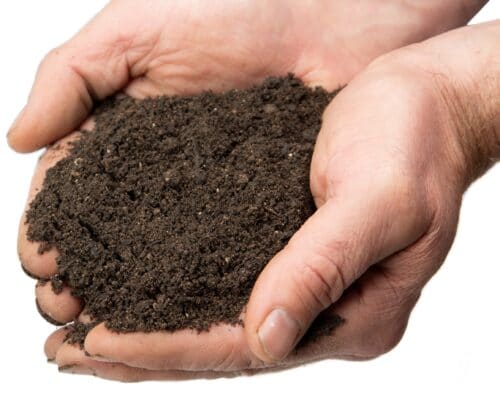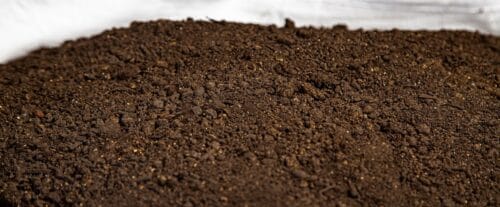How does soil type affect my lawn?
UK gardens have a variety of soil types, which can often make a big difference to our lawns. Knowing what type of soil makes up your garden can help you anticipate the best way to care for your lawn and get ahead of any potential issues.
Our guide looks at the most common types of soil and how it might help or hinder your lawn. Grass is a plant that has different requirements depending on what variety is grown, so it is a good idea to have a close look at your soil so you can understand if it is compatible with the type of lawn you are growing.
The first step will be to get down to simple chemistry and take a PH test of your soil to see if it is alkaline, neutral, or acidic, this is because some grasses require a particular PH level to survive.

Clay Soil
Clay soil is a heavy soil type. It can get sticky when wet and heavier clay soils can be rolled into a sausage within your fingers. Although fertile, the small particle size can make it more difficult for oxygen and nutrients to move through the soil, meaning regular aeration is key for maintaining the health of the lawn
Advantages
- Fertile soil that retains nutrients well
- Better able to handle periods of drought/ dry weather
Disadvantages
- Slower draining, which can lead to waterlogging
- More prone to becoming compacted, so regular aeration should be considered
- Poor drainage; waterlogging can occur during wet weather.
Grasses with deep roots such as tall fescue and hard-wearing ryegrass are best suited for clay soil.
Sandy Soil
Sandy soil is lighter and drains more quickly, however this does mean nutrients can also wash through (leach) quickly too. They tend to be more acidic than other types and can feel gritty between your fingers.
Advantages
- Quick drainage means waterlogging is not usually an issue
- Ideal for sports or playing surfaces
- Preferable for fine turf applications where higher frequency maintenance is possible.
Disadvantages
- Dries out quicker in hot periods
- Nutrients run through quicker, requiring more regular nutrient input
- Might require irrigation
Fescue grasses are generally most drought-resistant, with tall fescue having deep roots that can search out water, and can thrive even in poor soil.
Chalky Soil
Chalky or lime-rich soils tend to be more neutral or alkaline, can be light or sometimes contain some clay which makes it a little heavier. Can be generally stonier or contain flint and have varying nutrients available to the grass plant, so digging-in organic matter on occasion can help.
Advantages
- Drains well, so less likely to suffer waterlogging
- Balanced PH can sustain a wide range of grass types
Disadvantages
- Less fertile so may require more frequent fertilising
- Can dry out in summer
- High alkalinity of very chalky soil makes it unsuitable for some grass types
Wildflowers also do well in downland chalky soil. In recent years, more and more people have been incorporating wildflower areas into the garden, not only to assist wildlife but taking advantage of areas with poor soil that other plants/ grasses may struggle to survive in.
Silt Soil
Silt soils are fertile, light but moisture-retentive, and easily compacted. They are somewhat in between sandy and clay soils, with their particle size being midway between the two. This helps it retain nutrients better than sandy soils
Despite being made from tiny rock particles, silty soil tends to feel slippery and almost soapy when wet rather than gritty.
Advantages
- Retains nutrients and moisture better than sandy soil
Disadvantages
- Can become compacted
- Risk of overwatering
Most grass types are suitable for silt soil, a combination of ryegrass and fescues would cover all bases.
Loam
Loams are mixtures of clay, sand and silt that avoid the extremes of each type and therefore their weaknesses. It drains better than clay soils but retains nutrients longer than sandy soils.
Most grass types will thrive in loam lawns.
Advantages
- Fertile
- Drains well
- Retains nutrients
Disadvantages
- Few!

Buying Topsoil
Be careful when buying fresh topsoil as it important that it comes from a virgin source rather a recycled source which might contain inert material. Always ask your supplier if the soil is free of glass, bricks, and other unwanted/unfertile material. It is fine to use screened soil providing the origin is a good source. Ask if the supplier can send a sample or if you can speak to previous customers who have used the soil in the past.
